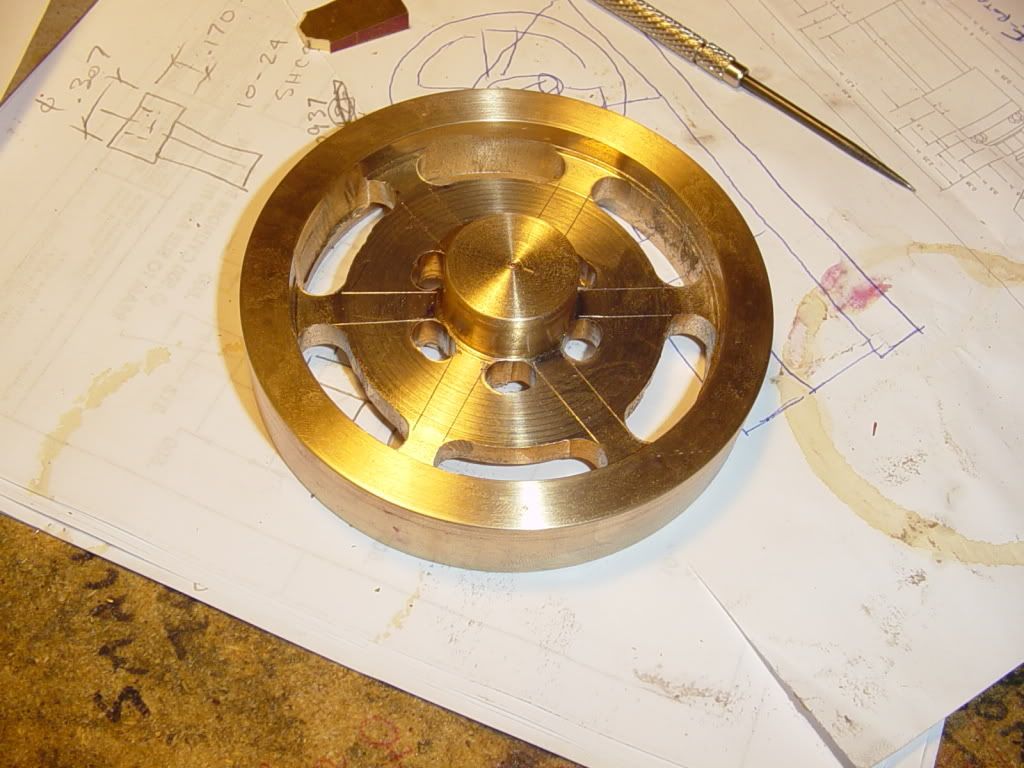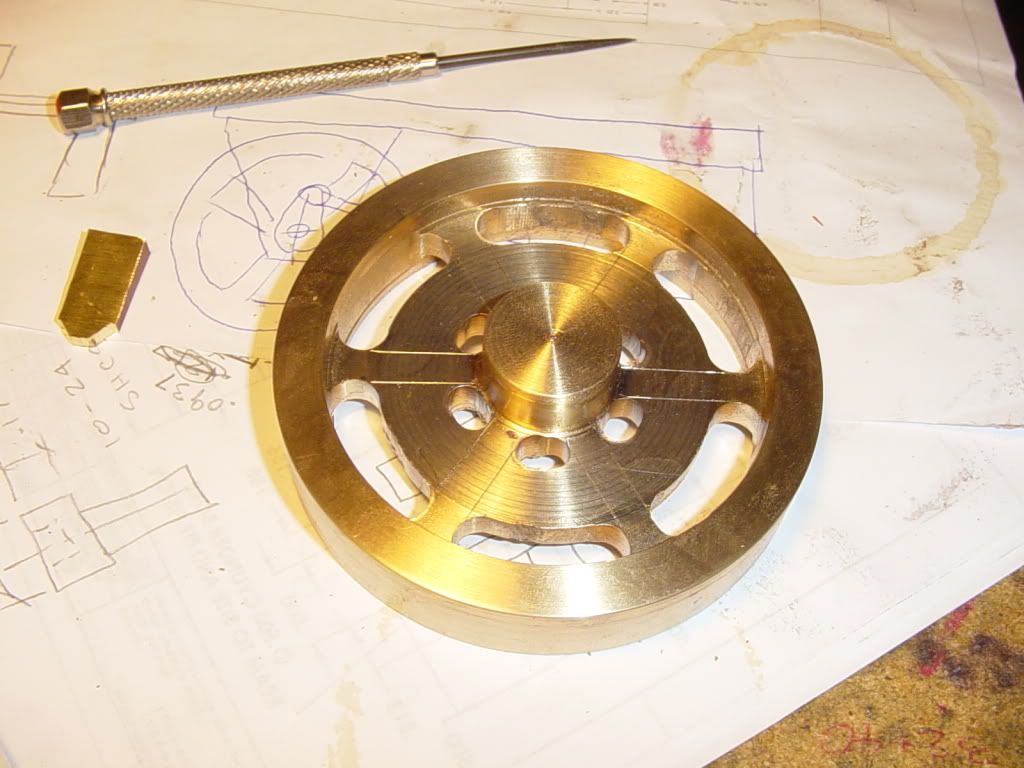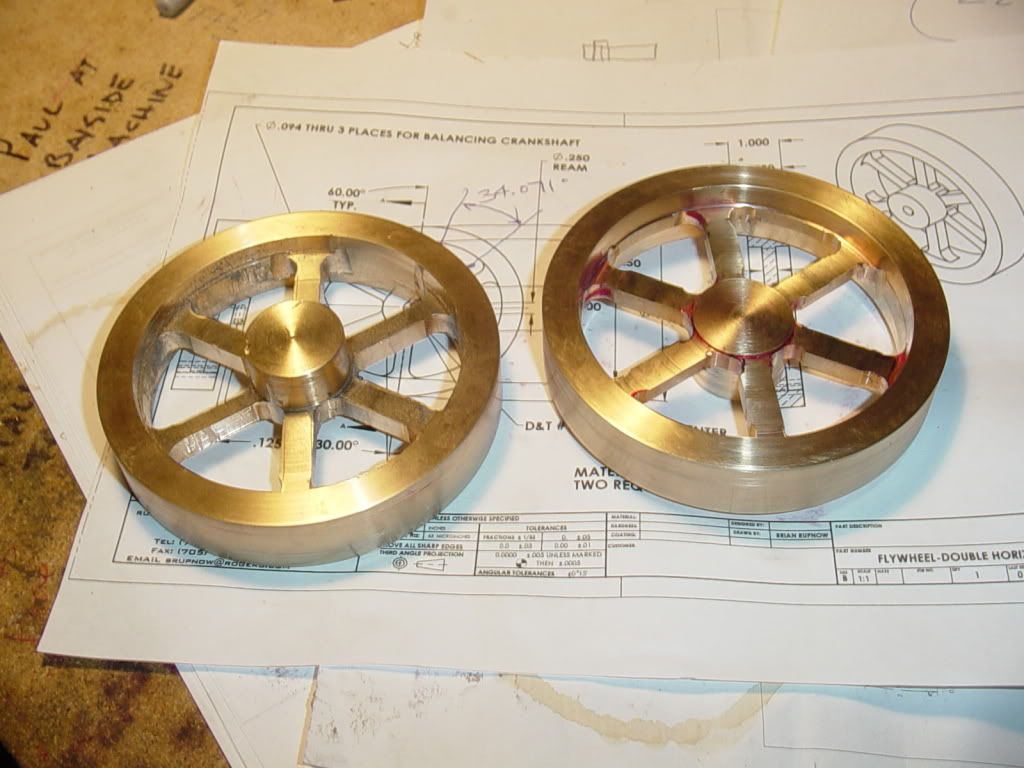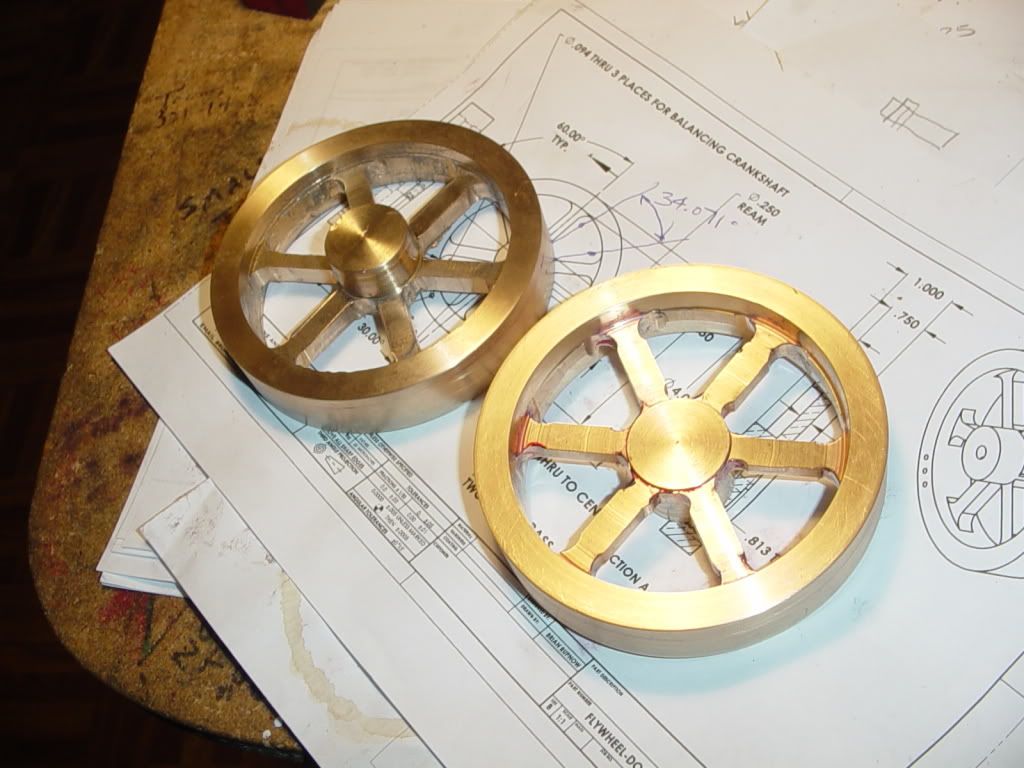;D ;D
Congratulations and well done Brian, but I do hope that is not your lifes blood staining the work!!!
Hopefully it is just marking fluid.
A bit of carefull work back on the rotary table would allow you to get rid of most of the remaining material and then finish with some filling.
By the time you have finished the second flywheel you will be looking back and saying...what the hell was I so hung up about. ;D ;D ;D

:big: :big:
On a side note: -
Are you sure about the Maths you presented?...... I agree with the final 2 minutes, but I got there from a different calculation.
On your drawing you have jotted 1 turn = 4 degs. of rotation, which would be correct for a 90:1 gear ratio table, a
typical ratio for a lot of the current models available.
4 degs = 240 minutes...divide by the 120 marks on your handwheel gives 2 minutes per div.
on the other hand: -
If, as you suggest in your write up, it is 4 turns per deg of rotation, this would be a 1440:1 ratio....I must say I have never come accross a rotary table with such a high ratio.... I am not saying they don't exist though.
If it is as you wrote, then 1 turn would = 1/4 deg.
1/4 deg = 15 minutes, which divided by 120 would give 7.5 seconds per div.
Just curious.
Keep happy.
Sandy. 

;D







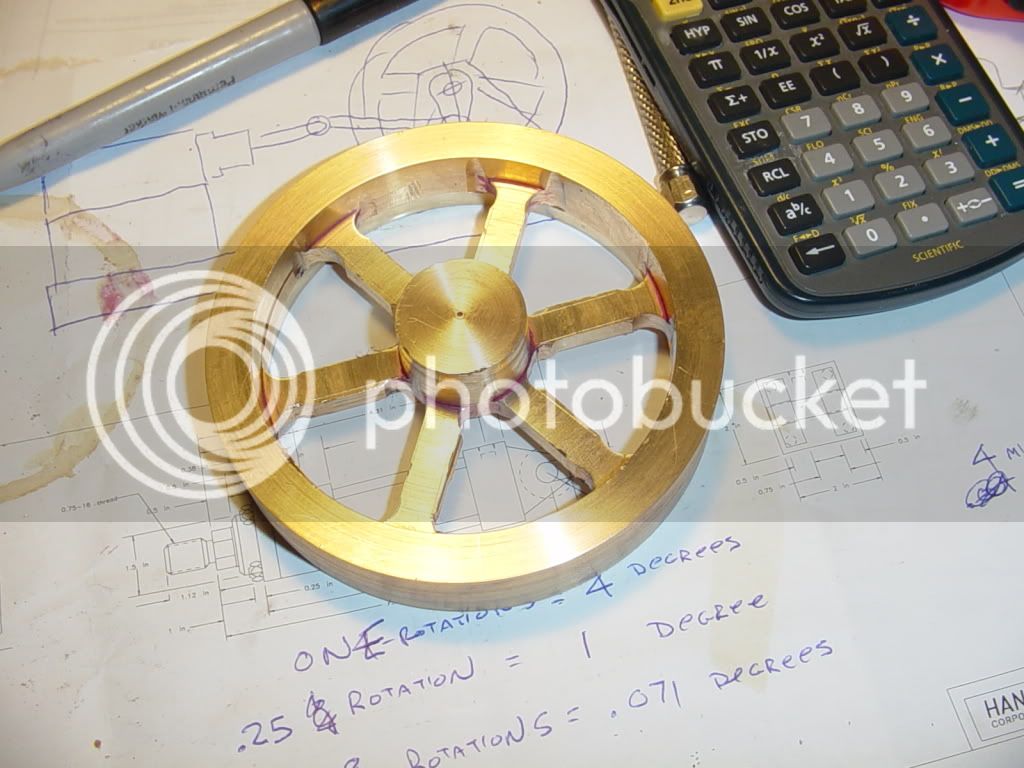
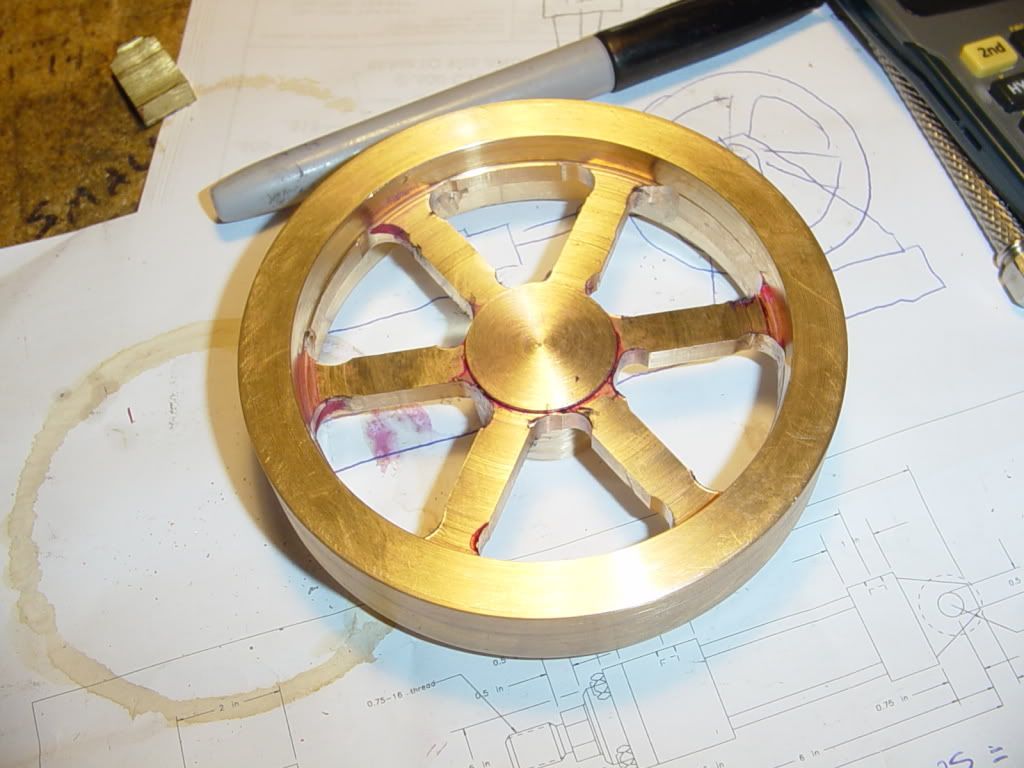




















![DreamPlan Home Design and Landscaping Software Free for Windows [PC Download]](https://m.media-amazon.com/images/I/51kvZH2dVLL._SL500_.jpg)












![MeshMagic 3D Free 3D Modeling Software [Download]](https://m.media-amazon.com/images/I/B1U+p8ewjGS._SL500_.png)






















